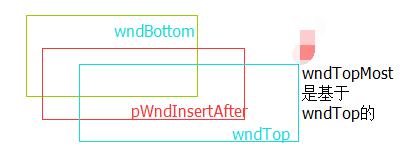- Qt 自定义标题栏——QtWidgets
十年之少
QtWidgetsQt自定义标题栏
1.去掉标题栏,实现窗体拖动(常用)以上转载方法实现窗体拖动是通过Windows事件的;但是有时候为了跨平台这种的话就得重写,比较麻烦,所以还是采用最原始的方法:通过QWidgets的鼠标事件来实现。.h文件classQRCodeDialog:publicQDialog{Q_OBJECT...protected:voidmouseMoveEvent(QMouseEvent*event)overri
- 编程语言选择分析:C#、Rust、Go 与 TypeScript 编译器优化
互联网搬砖老肖
工具使用原力计划c#rustgolang
编程语言选择分析:C#、Rust、Go与TypeScript编译器优化在讨论编程语言的选择时,特别是针对微软的C#和Rust,以及谷歌的Go语言,以及微软试图通过Go来拯救TypeScript编译器的问题,我们可以从多个角度来分析和理解。首先,我们来逐一分析这些语言的特点和它们各自的应用场景。1.C#C#是微软开发的一种面向对象的编程语言,它是.NET框架的核心部分。C#广泛用于Windows应用
- 领域驱动设计(DDD)与MVC架构:理念对比与架构选择
以恒1
mvc架构
领域驱动设计(DDD)与MVC架构:理念对比与架构选择一、架构之争的本质:业务复杂度驱动技术演进在软件开发领域,没有银弹式的完美架构,只有适合当前业务场景的合理选择。MVC与DDD的区别本质上是业务复杂度与架构响应能力的匹配问题。让我们通过一个真实案例展开思考:案例背景某金融科技公司初期采用MVC架构开发支付系统,随着业务扩展,新增跨境支付、分账系统、风控规则等功能后,代码库逐渐演变成"大泥球"架
- ollama 基本使用教程
海上彼尚
AIai前端
目录1.安装OllamamacOS或LinuxWindows(WSL2)2.基础命令启动与停止更新Ollama3.模型管理下载预训练模型运行模型查看已安装模型删除模型从Modelfile创建自定义模型4.高级功能服务器模式与API多会话管理环境变量配置5.常见问题与技巧加速模型下载查看日志模型参数调整模型导出与分享Ollama是一个开源的大型语言模型服务工具,能够帮助用户在本地运行大模型。通过简单
- c语言中longjmp()函数,C语言的反人类函数:setjmp和longjmp的详细剖析
weixin_39822629
c语言中longjmp()函数
我希望看这篇文章的你对C++的传统异常处理,即try...catch...throw有了解(不是WindowsSEH),这样才能方便你最深入的理解这2个C语言的反人类函数。当然如果不了解就先看下面的“C++式的异常处理”,如果感觉自己了解了,可以直接skip看到“C语言中的模拟”。【C++式的异常处理】首先,我们写一个类,请不要想这个类有什么特别的地方,其只是为了打印出来构造和析构。classCF
- sc命令在windows上将elasticsearch和kibana自动作为服务开机启动
windowselastic
sc是Windows自带的命令行工具,用于管理服务。1.创建服务:打开命令提示符,运行以下命令:sccreateElasticsearchbinPath="D:\elasticsearch\bin\elasticsearch.bat"start=auto2.启动服务:创建后,启动服务:scstartElasticsearch亲测可用
- 【WinPcap】——ARP欺骗
猫和鱼爪
WinPcap网络协议winpcap网络协议
利用WinPcap的简单ARP欺骗基础知识关于WinPcap在vc的环境搭建关于ARP等结构下图是从TCP/IP详解中摘录的图片:
- 『解决ping问题』windows ubuntu 开发板三者互连如何设置
指向NULL
环境&调试嵌入式
嵌入式开发中,我们经常会遇到ping问题,也就是windows主机,虚拟机和开发板之间互相ping不通的问题,看了韦东山老师关于此部分的讲解做了以下总结。1.确定虚拟机使用的网卡先来看几种应用场景:情景一:PC机使用有线网卡A直接连接开发板。这种情况下我们使用了有线网卡A最终连接了开发板,所以虚拟机要设置有线网卡A作为桥接网卡。情景二:PC机使用无线网卡A连接路由器,开发板连接到同一路由器的有线网
- Win NAS 的数据传输原理分析,超级详细!
DeepSeek+NAS
家用NASWinNAS飞牛NAS人工智能安卓NAS
WinNAS是一款运行在Windows系统上的NAS服务,允许用户通过手机客户端远程访问和管理电脑上的文件。为了实现这一功能,WinNAS与手机之间的数据传输过程涉及多个步骤,具体取决于手机和WinNAS电脑所处的网络环境。以下是整个数据传输过程的详细说明:1.权限认证与连接建立无论手机和WinNAS电脑是否在同一个局域网内,手机客户端在访问WinNAS之前,都需要先通过耘想公司的云服务器进行权限
- 在Windows系统上测试safari浏览器的兼容性
大汉堡玩测试
safari前端功能测试
文章目录前言手机端的safari浏览器能替代PC端吗在Windows上测试safari浏览器的兼容性的方法利用云服务使用虚拟机在Windows上下载虚拟机遇到的问题以及解决思路总结前言在测试网站的兼容性时需要用到safari浏览器,在没有Mac的情况下,又不想麻烦同事,那该怎样在Windows系统上使用safari浏览器呢?手机端的safari浏览器能替代PC端吗答案是不能,主要是因为以下几点:屏
- cherry-studio - 多模型支持的跨平台 AI 桌面助手
小众AI
AI开源人工智能AI编程
GitHub:https://github.com/CherryHQ/cherry-studio更多AI开源软件:发现分享好用的AI工具、AI开源软件、AI模型、AI变现-小众AI一款支持多种大语言模型服务的跨平台桌面客户端,兼容Windows、Linux和macOS系统。它支持主流云端模型(如OpenAI、Anthropic等)以及本地模型(如Ollama、LMStudio),能够满足文本生成、
- RK35XX(3568) Android WSL ubuntu22.04 编译环境配置
hmbbPdx_
firefly-RK3288RK驱动开发Rk开发(RK3568)androidlinux
前言:装Ubuntu真机操作是很流畅但是没什么软件,装Vmware虚拟机操作卡顿配置也麻烦。那不如试一试wsl吧,命令行操作,流程又快捷wsl简介:适用于Linux的Windows子系统可让开发人员按原样运行GNU/Linux环境-包括大多数命令行工具、实用工具和应用程序-且不会产生传统虚拟机或双启动设置开销。window版本:10或11(7不支持)Ubuntu:16.04~22.04.1WSL:
- Virtual Machine Platform is not enabled. Enable it using the following PowerShell script (in an admi
朋也透william
docker
DockerDesktop安装指南以及Windows下WSL2和Hyper-V相关问题追查-寂寞姜大虎-博客园(cnblogs.com)https://www.cnblogs.com/qfl-blog/p/18200575
- eclipse中修改svn账号密码
漫漫求索者
开发笔记eclipssvn账号密码JaveHL
背景:鉴于单位的邮箱密码定时更换,svn账号又跟邮箱账号绑定,所以每次都需要改svn账号密码,最近由于一直在用androidstudio开放,偶然接触到之前的eclipse项目,想打开一下,却发现svn密码不能用了,想着改下密码,却忘了怎么修改了,教训,还是记录一下吧。步骤如下:1、首先看一下自己eclipse用的是那个版本的SVN,在windows>preference>Team>SVN在右边的
- SVN学习
无妄无望
工具使用svn学习
1、SVN是什么SVN(Subversion)是一个开源的版本控制系统,用于跟踪文件和目录的更改。它允许团队协作开发项目,管理代码的版本历史,并支持多人同时对代码进行修改和提交。SVN是集中式版本控制系统(CVCS)的代表之一,与Git(分布式版本控制系统)不同,SVN的代码库通常存储在一个中央服务器上。SVN的主要特点版本控制:记录文件和目录的每一次更改,支持版本回溯和历史查看。多人协作:允许多
- SpringBoot、Spring、SpringMVC原理梳理
猛猛开发
笔记javaspring
SpringBoot、Spring、SpringMVC原理梳理文章目录SpringBoot、Spring、SpringMVC原理梳理Spring、SpringMVC、SpringBoot三者的关系:Spring和SpringMVC:SpringBoot、Spring:SpringMVC的DispatchServlet解析DispatchServlet初始化:initServletBeaninitW
- 实用工具-Another Redis Desktop Manager介绍
吕海洋
数据库工具redis数据库
GitHub:https://github.com/qishibo/AnotherRedisDesktopManager/releasesGitee:AnotherRedisDesktopManager发行版-Gitee.comAnotherRedisDesktopManager是一款免费的Redis可视化管理工具,具有以下特点和功能:特点跨平台支持:兼容Windows、Mac、Linux等操作系
- springmvc中如何自定义入参注解并自动注入值
红豆和绿豆
Springmvc
在Spring中,`HandlerMethodArgumentResolver`是一个非常强大的接口,用于自定义控制器方法参数的解析逻辑。以下是一个完整的示例,展示如何使用`HandlerMethodArgumentResolver`并结合自定义注解来实现特定的参数解析逻辑。###**1.定义自定义注解**首先,定义一个自定义注解,用于标记需要特殊处理的参数。例如,定义一个`@CurrentUse
- SpringMVC系列之整合Thymeleaf【Thymeleaf整合springmvc介绍及Thymeleaf基础概念、使用语法详解】
吕鑫洋
SpringMVC系列javahtmljsspringmvc
Thymeleaf是java的模板引擎,可以将动态页面静态化;目前使用较多的模板引擎:Velocity、Freemarker、Thymeleaf一、Maven依赖Thymeleaf整合springmvc共需要两个jar:1.thymeleaf2.thymeleaf-spring5org.thymeleafthymeleaf3.0.9.RELEASEorg.thymeleafthymeleaf-sp
- Neo4j GDS-02-graph-data-science 插件库安装实战笔记
后端java
neo4japoc系列Neo4jAPOC-01-图数据库apoc插件介绍Neo4jAPOC-01-图数据库apoc插件安装neo4jonwindows10Neo4jAPOC-03-图数据库apoc实战使用使用Neo4jAPOC-04-图数据库apoc实战使用使用apoc.path.spanningTree最小生成树Neo4jAPOC-05-图数据库apoc实战使用使用labelFilterNeo4
- Git——如何上传本地文件到自己的github仓库
Bruce_Ling
githubc++算法gitwindowsvscode
目录简介前言1、Windows下ping通github.com2、安装Git2.1配置Git2.2检查Git3、上传本地文件到远程仓库3.1创建github仓库总结简介本博文介绍了如何将本地的项目文件推送到自己远程的github仓库。前言因为程序是在ubuntu系统里面跑的,一开始是想在Ubuntu系统里面将文件上传到github仓库,通过修改hosts文件里面的github的ip地址,偶尔能在浏
- Mac上传本地项目文件夹到远程Github个人仓库的方法及常见报错处理
Uzw
GitMacgitgithubmac
最近写NER模型的同时学习参悟了一个开源的项目,做了一些Comments改了点分词规则,打算上传到个人Github仓库,上一次本地上传还是用Windows系统,换了Mac发现有一些规则不能用了,好久不用Git都忘光了…上传过程中报错无数,在此一并总结啦!文章目录Prerequisite上传本地文件夹到Github步骤报错问题描述及解决方法1.You‘veaddedanothergitreposit
- 【无标题】
gs80140
AI人工智能
KVCache在自回归生成中的作用及显存优化1.什么是KVCache?在大语言模型(LLM)进行自回归(autoregressive)文本生成时,每次生成新token,都需要基于过去的上下文重新计算self-attention机制中的Key(K)和值(V)。KVCache(键值缓存)是一种优化策略,它缓存先前计算的K/V张量,避免重复计算,从而提高生成速度并降低计算成本。2.KVCache在自回归
- 【Python配置环境变量】2024最新版Python安装教程(附带详细步骤)!!!
「已注销」
python开发语言
一、Python安装1、访问官网打开浏览器,访问Python官网。2、下载Python安装包2.1、在官网首页,找到并点击“Downloads”按钮。2.2、根据您的操作系统(Windows、macOS、Linux等)选择合适的版本。对于Windows用户,通常会看到“Windowsx86-64executableinstaller”(64位)和“Windowsx86executableinsta
- arp -a命令输出详解
learning-striving
eNSP网络智能路由器路由器接口计算机网络计算机网络
一、arp-a输出C:\WINDOWS\system32>arp-a接口:169.254.199.84---0x2Internet地址物理地址类型169.254.255.255ff-ff-ff-ff-ff-ff静态224.0.0.201-00-5e-00-00-02静态224.0.0.2201-00-5e-00-00-16静态224.0.0.25101-00-5e-00-00-fb静态224.0.
- Neo4j GDS-04-图的中心性分析介绍
后端java
neo4japoc系列Neo4jAPOC-01-图数据库apoc插件介绍Neo4jAPOC-01-图数据库apoc插件安装neo4jonwindows10Neo4jAPOC-03-图数据库apoc实战使用使用Neo4jAPOC-04-图数据库apoc实战使用使用apoc.path.spanningTree最小生成树Neo4jAPOC-05-图数据库apoc实战使用使用labelFilterNeo4
- Windows使用Browser Use笔记
人工智能ai开发
相关文档:https://docs.browser-use.com/quickstart首先安装UV命令行cmdpowershell-ExecutionPolicyByPass-c"irmhttps://astral.sh/uv/install.ps1|iex"设置环境变量setPath=C:\xx\.local\bin;%Path%查看版本uv-V查看可用和已安装的Python版本uvpytho
- 使用Jmeter进行接口测试的基本步骤有哪些?
海姐软件测试
Jmeter测试工具职场和发展面试
使用JMeter进行接口测试通常包含以下基本步骤:1.环境准备下载与安装:访问ApacheJMeter的官方网站(ApacheJMeter-ApacheJMeter™)下载适合你操作系统的JMeter版本,解压下载的压缩包到指定目录。启动JMeter:在解压后的目录中,找到bin文件夹,根据操作系统不同,双击jmeter.bat(Windows)或jmeter.sh(Linux/Mac)启动JMe
- Ubuntu 上可以安装ms sqlserver?(不能上网2)
修炼成精
ubuntusqlserverlinux
如果您有一台可以上网的Windows电脑,您可以利用它来下载所需的SQLServer安装包和依赖包,然后将这些包传输到无法上网的Ubuntu服务器上进行离线安装。以下是详细的步骤:步骤1:在Windows电脑上下载所需的软件包安装WSL(WindowsSubsystemforLinux):如果您还没有安装WSL,可以按照以下步骤安装:打开PowerShell并运行以下命令以启用WSL:powers
- 【 <二> 丹方改良:Spring 时代的 JavaWeb】之 Spring MVC 的核心组件:DispatcherServlet 的工作原理
Foyo Designer
springmvcjavaservletHandlerMappingViewResolver
点击此处查看合集https://blog.csdn.net/foyodesigner/category_12907601.html?fromshare=blogcolumn&sharetype=blogcolumn&sharerId=12907601&sharerefer=PC&sharesource=FoyoDesigner&sharefrom=from_link一、DispatcherServ
- java责任链模式
3213213333332132
java责任链模式村民告县长
责任链模式,通常就是一个请求从最低级开始往上层层的请求,当在某一层满足条件时,请求将被处理,当请求到最高层仍未满足时,则请求不会被处理。
就是一个请求在这个链条的责任范围内,会被相应的处理,如果超出链条的责任范围外,请求不会被相应的处理。
下面代码模拟这样的效果:
创建一个政府抽象类,方便所有的具体政府部门继承它。
package 责任链模式;
/**
*
- linux、mysql、nginx、tomcat 性能参数优化
ronin47
一、linux 系统内核参数
/etc/sysctl.conf文件常用参数 net.core.netdev_max_backlog = 32768 #允许送到队列的数据包的最大数目
net.core.rmem_max = 8388608 #SOCKET读缓存区大小
net.core.wmem_max = 8388608 #SOCKET写缓存区大
- php命令行界面
dcj3sjt126com
PHPcli
常用选项
php -v
php -i PHP安装的有关信息
php -h 访问帮助文件
php -m 列出编译到当前PHP安装的所有模块
执行一段代码
php -r 'echo "hello, world!";'
php -r 'echo "Hello, World!\n";'
php -r '$ts = filemtime("
- Filter&Session
171815164
session
Filter
HttpServletRequest requ = (HttpServletRequest) req;
HttpSession session = requ.getSession();
if (session.getAttribute("admin") == null) {
PrintWriter out = res.ge
- 连接池与Spring,Hibernate结合
g21121
Hibernate
前几篇关于Java连接池的介绍都是基于Java应用的,而我们常用的场景是与Spring和ORM框架结合,下面就利用实例学习一下这方面的配置。
1.下载相关内容: &nb
- [简单]mybatis判断数字类型
53873039oycg
mybatis
昨天同事反馈mybatis保存不了int类型的属性,一直报错,错误信息如下:
Caused by: java.lang.NumberFormatException: For input string: "null"
at sun.mis
- 项目启动时或者启动后ava.lang.OutOfMemoryError: PermGen space
程序员是怎么炼成的
eclipsejvmtomcatcatalina.sheclipse.ini
在启动比较大的项目时,因为存在大量的jsp页面,所以在编译的时候会生成很多的.class文件,.class文件是都会被加载到jvm的方法区中,如果要加载的class文件很多,就会出现方法区溢出异常 java.lang.OutOfMemoryError: PermGen space.
解决办法是点击eclipse里的tomcat,在
- 我的crm小结
aijuans
crm
各种原因吧,crm今天才完了。主要是接触了几个新技术:
Struts2、poi、ibatis这几个都是以前的项目中用过的。
Jsf、tapestry是这次新接触的,都是界面层的框架,用起来也不难。思路和struts不太一样,传说比较简单方便。不过个人感觉还是struts用着顺手啊,当然springmvc也很顺手,不知道是因为习惯还是什么。jsf和tapestry应用的时候需要知道他们的标签、主
- spring里配置使用hibernate的二级缓存几步
antonyup_2006
javaspringHibernatexmlcache
.在spring的配置文件中 applicationContent.xml,hibernate部分加入
xml 代码
<prop key="hibernate.cache.provider_class">org.hibernate.cache.EhCacheProvider</prop>
<prop key="hi
- JAVA基础面试题
百合不是茶
抽象实现接口String类接口继承抽象类继承实体类自定义异常
/* * 栈(stack):主要保存基本类型(或者叫内置类型)(char、byte、short、 *int、long、 float、double、boolean)和对象的引用,数据可以共享,速度仅次于 * 寄存器(register),快于堆。堆(heap):用于存储对象。 */ &
- 让sqlmap文件 "继承" 起来
bijian1013
javaibatissqlmap
多个项目中使用ibatis , 和数据库表对应的 sqlmap文件(增删改查等基本语句),dao, pojo 都是由工具自动生成的, 现在将这些自动生成的文件放在一个单独的工程中,其它项目工程中通过jar包来引用 ,并通过"继承"为基础的sqlmap文件,dao,pojo 添加新的方法来满足项
- 精通Oracle10编程SQL(13)开发触发器
bijian1013
oracle数据库plsql
/*
*开发触发器
*/
--得到日期是周几
select to_char(sysdate+4,'DY','nls_date_language=AMERICAN') from dual;
select to_char(sysdate,'DY','nls_date_language=AMERICAN') from dual;
--建立BEFORE语句触发器
CREATE O
- 【EhCache三】EhCache查询
bit1129
ehcache
本文介绍EhCache查询缓存中数据,EhCache提供了类似Hibernate的查询API,可以按照给定的条件进行查询。
要对EhCache进行查询,需要在ehcache.xml中设定要查询的属性
数据准备
@Before
public void setUp() {
//加载EhCache配置文件
Inpu
- CXF框架入门实例
白糖_
springWeb框架webserviceservlet
CXF是apache旗下的开源框架,由Celtix + XFire这两门经典的框架合成,是一套非常流行的web service框架。
它提供了JAX-WS的全面支持,并且可以根据实际项目的需要,采用代码优先(Code First)或者 WSDL 优先(WSDL First)来轻松地实现 Web Services 的发布和使用,同时它能与spring进行完美结合。
在apache cxf官网提供
- angular.equals
boyitech
AngularJSAngularJS APIAnguarJS 中文APIangular.equals
angular.equals
描述:
比较两个值或者两个对象是不是 相等。还支持值的类型,正则表达式和数组的比较。 两个值或对象被认为是 相等的前提条件是以下的情况至少能满足一项:
两个值或者对象能通过=== (恒等) 的比较
两个值或者对象是同样类型,并且他们的属性都能通过angular
- java-腾讯暑期实习生-输入一个数组A[1,2,...n],求输入B,使得数组B中的第i个数字B[i]=A[0]*A[1]*...*A[i-1]*A[i+1]
bylijinnan
java
这道题的具体思路请参看 何海涛的微博:http://weibo.com/zhedahht
import java.math.BigInteger;
import java.util.Arrays;
public class CreateBFromATencent {
/**
* 题目:输入一个数组A[1,2,...n],求输入B,使得数组B中的第i个数字B[i]=A
- FastDFS 的安装和配置 修订版
Chen.H
linuxfastDFS分布式文件系统
FastDFS Home:http://code.google.com/p/fastdfs/
1. 安装
http://code.google.com/p/fastdfs/wiki/Setup http://hi.baidu.com/leolance/blog/item/3c273327978ae55f93580703.html
安装libevent (对libevent的版本要求为1.4.
- [强人工智能]拓扑扫描与自适应构造器
comsci
人工智能
当我们面对一个有限拓扑网络的时候,在对已知的拓扑结构进行分析之后,发现在连通点之后,还存在若干个子网络,且这些网络的结构是未知的,数据库中并未存在这些网络的拓扑结构数据....这个时候,我们该怎么办呢?
那么,现在我们必须设计新的模块和代码包来处理上面的问题
- oracle merge into的用法
daizj
oraclesqlmerget into
Oracle中merge into的使用
http://blog.csdn.net/yuzhic/article/details/1896878
http://blog.csdn.net/macle2010/article/details/5980965
该命令使用一条语句从一个或者多个数据源中完成对表的更新和插入数据. ORACLE 9i 中,使用此命令必须同时指定UPDATE 和INSE
- 不适合使用Hadoop的场景
datamachine
hadoop
转自:http://dev.yesky.com/296/35381296.shtml。
Hadoop通常被认定是能够帮助你解决所有问题的唯一方案。 当人们提到“大数据”或是“数据分析”等相关问题的时候,会听到脱口而出的回答:Hadoop! 实际上Hadoop被设计和建造出来,是用来解决一系列特定问题的。对某些问题来说,Hadoop至多算是一个不好的选择,对另一些问题来说,选择Ha
- YII findAll的用法
dcj3sjt126com
yii
看文档比较糊涂,其实挺简单的:
$predictions=Prediction::model()->findAll("uid=:uid",array(":uid"=>10));
第一个参数是选择条件:”uid=10″。其中:uid是一个占位符,在后面的array(“:uid”=>10)对齐进行了赋值;
更完善的查询需要
- vim 常用 NERDTree 快捷键
dcj3sjt126com
vim
下面给大家整理了一些vim NERDTree的常用快捷键了,这里几乎包括了所有的快捷键了,希望文章对各位会带来帮助。
切换工作台和目录
ctrl + w + h 光标 focus 左侧树形目录ctrl + w + l 光标 focus 右侧文件显示窗口ctrl + w + w 光标自动在左右侧窗口切换ctrl + w + r 移动当前窗口的布局位置
o 在已有窗口中打开文件、目录或书签,并跳
- Java把目录下的文件打印出来
蕃薯耀
列出目录下的文件文件夹下面的文件目录下的文件
Java把目录下的文件打印出来
>>>>>>>>>>>>>>>>>>>>>>>>>>>>>>>>>>>>>>>>
蕃薯耀 2015年7月11日 11:02:
- linux远程桌面----VNCServer与rdesktop
hanqunfeng
Desktop
windows远程桌面到linux,需要在linux上安装vncserver,并开启vnc服务,同时需要在windows下使用vnc-viewer访问Linux。vncserver同时支持linux远程桌面到linux。
linux远程桌面到windows,需要在linux上安装rdesktop,同时开启windows的远程桌面访问。
下面分别介绍,以windo
- guava中的join和split功能
jackyrong
java
guava库中,包含了很好的join和split的功能,例子如下:
1) 将LIST转换为使用字符串连接的字符串
List<String> names = Lists.newArrayList("John", "Jane", "Adam", "Tom");
- Web开发技术十年发展历程
lampcy
androidWeb浏览器html5
回顾web开发技术这十年发展历程:
Ajax
03年的时候我上六年级,那时候网吧刚在小县城的角落萌生。传奇,大话西游第一代网游一时风靡。我抱着试一试的心态给了网吧老板两块钱想申请个号玩玩,然后接下来的一个小时我一直在,注,册,账,号。
彼时网吧用的512k的带宽,注册的时候,填了一堆信息,提交,页面跳转,嘣,”您填写的信息有误,请重填”。然后跳转回注册页面,以此循环。我现在时常想,如果当时a
- 架构师之mima-----------------mina的非NIO控制IOBuffer(说得比较好)
nannan408
buffer
1.前言。
如题。
2.代码。
IoService
IoService是一个接口,有两种实现:IoAcceptor和IoConnector;其中IoAcceptor是针对Server端的实现,IoConnector是针对Client端的实现;IoService的职责包括:
1、监听器管理
2、IoHandler
3、IoSession
- ORA-00054:resource busy and acquire with NOWAIT specified
Everyday都不同
oraclesessionLock
[Oracle]
今天对一个数据量很大的表进行操作时,出现如题所示的异常。此时表明数据库的事务处于“忙”的状态,而且被lock了,所以必须先关闭占用的session。
step1,查看被lock的session:
select t2.username, t2.sid, t2.serial#, t2.logon_time
from v$locked_obj
- javascript学习笔记
tntxia
JavaScript
javascript里面有6种基本类型的值:number、string、boolean、object、function和undefined。number:就是数字值,包括整数、小数、NaN、正负无穷。string:字符串类型、单双引号引起来的内容。boolean:true、false object:表示所有的javascript对象,不用多说function:我们熟悉的方法,也就是
- Java enum的用法详解
xieke90
enum枚举
Java中枚举实现的分析:
示例:
public static enum SEVERITY{
INFO,WARN,ERROR
}
enum很像特殊的class,实际上enum声明定义的类型就是一个类。 而这些类都是类库中Enum类的子类 (java.l

